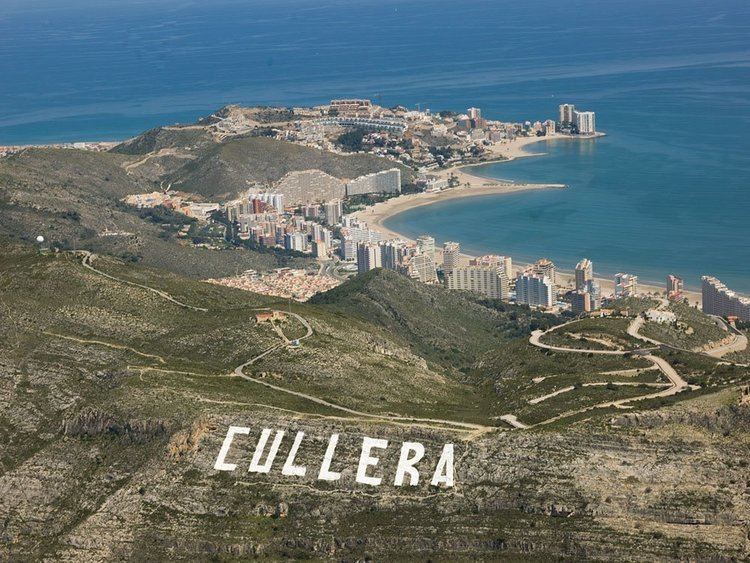Time zone CET (UTC+1) Area 53.8 km² Population 22,461 (2014) | Judicial district Sueca Elevation 2 m Local time Monday 12:17 PM | |
 | ||
Demonym(s) Cullerenc, cullerencaCullerà, cullerana Weather 21°C, Wind W at 26 km/h, 51% Humidity | ||
A trip to cullera valencia spain valenciatrip
Cullera ([kuˈʎeɾa]) is a municipality in Valencia in the Valencian Community, Spain, situated in the Ribera Baixa comarca.
Contents
- A trip to cullera valencia spain valenciatrip
- Map of Cullera Valencia Spain
- Nice places sun beach cullera valencia spain
- Geography
- Neighbourhoods and hamlets
- Bordering cities
- Topography
- Economy
- Historical and artistic landmarks
- Food
- Twin towns
- References
Map of Cullera, Valencia, Spain
Nice places sun beach cullera valencia spain
Geography
Cullera is situated at the mouth of the Júcar river, 40 km from the capital of Valencia.
Neighbourhoods and hamlets
The main neighbourhoods of Cullera are:
Bordering cities
Sueca, Corbera, Llaurí, Favara, Alzira and Tavernes de Valldigna all neighbour Cullera. They are all in the province of Valencia.
Topography
The mountain of Cullera, known as Munt de l'Or or Muntanya de l'Or, is the last mountain in the Iberian System before the Mediterranean Sea. It has an altitude of 233 meters. The historical parts of the city are to the south, and the modern tourist district is to the east, looking to the sea.
The San Lorenzo lagoon is a small lake situated north of the mountain. It once formed part of a much bigger lake before the lands were drained for agricultural use. The lake now marks the southern limit of the Parque Natural de la Albufera.
Economy
The economy in Cullera is traditionally based in agriculture, with rice and oranges as important crops. Fishing, historically a large part of the economy, has diminished in importance due to important tourism developments, both nationally and internationally, in the region.
Historical and artistic landmarks
Food
The typical food of the region is the so-called Mediterranean diet, which is characterized by a rich selection of vegetables. In Cullera's orchards, there are many citrus crops (oranges, mandarins and lemons), as well as fish and seafood of the nearby ocean. Alongside the offerings of the orchards, not to mention the seafood, there are dozens of ways to prepare rice: arroz al horno, arroz a banda, etc.
